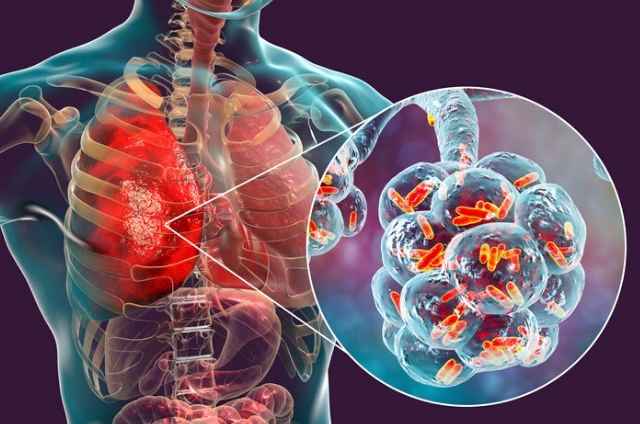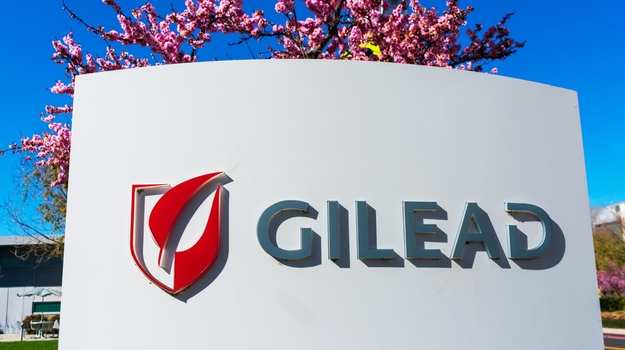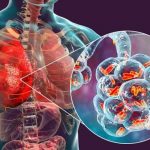Italian scientist says she discovered main mechanism behind COVID-19, but top Israeli researcher says the ‘theory lacks backing’

Back in April, we wrote about a new research study that revealed that COVID-19 attacks hemoglobin in red blood cells, rendering it incapable of transporting oxygen. The study, which led by Chinese researchers, Dr Wenzhong Liu from Sichuan University and Dr Hualan Li from Yibin University, revealed that the Sars-CoV-2 coronavirus attacks hemoglobin in the the red blood cells through a series of cellular actions, that ultimately renders the red blood cells incapable of transporting oxygen.
Now, an Italian pharmacology scholar Annalisa Chiusolo has now come up with similar theory. She claimed to have discovered main mechanism behind COVID-19. In a study published by some of the country’s leading newspapers, including the Italian dailies Il Tempo and Il Giornale, Chiusolo explained that COVID-19 damages the hemoglobin, impairing the ability of red blood cells to transport oxygen throughout the body, compromising the lungs and resulting in Acute Respiratory Distress Syndrome (ARDS). She is a graduate of the Faculty of Pharmacy of the University of Perugia, Italy.
According to a report from Jerusalem Post, Chiusolo said that SARS-CoV-2, the formal name for the novel coronavirus, needs porphyrins for its survival – and probably for its replication – so it attacks hemoglobin, the protein that carries oxygen in the blood, which translates to less oxygen available for the body. The consequence of less oxygen is the accumulation of carbon dioxide.
Chiusolo said the deadly coronavirus needs porphyrins for its survival, probably for its replication, therefore it attacks hemogloblin (the protein that carries oxygen in the blood), in particular the OFR10 and OFR3 proteins attack the beta chain and orf1ab subtracts porphyrin. The concepts seem a little abstruse, for a non-expert, but simplifying this translates into a lower availability of oxygen available to our body, with consequent accumulation of carbon dioxide. She went on to explain why the effect of lack of oxygen to the lung. “Thus the lung cells become distressed and become the site of the cytokine cascade – that is, a huge immune response – responsible for the acute inflammation that characterizes Covid-19 pneumonia.”
She added: “The hemoglobin value in the blood can be an important parameter for evaluating Sars-Cov2 infection: in men the normal value of Hb (hemoglobin) is higher than in women, which would explain the higher incidence of Covid pneumonia in men than to women, the lower incidence and the better prognosis in children and pregnant women, where the Hb values are lower due to an increased need for iron, which makes the “nourishment” of the virus less available.”
“The lung cells become the site of the cytokine cascade, an enormous immune response, which is responsible for the acute lung inflammation that characterizes COVID-19 pneumonia,” she said. “The value of hemoglobin in the blood can be an important parameter to assess the SARS-CoV-2 infection: In men the normal value of hemoglobin (Hb) is higher than in women. This would explain the higher incidence of COVID-19 pneumonia in men compared to women, and the lower incidence and better prognosis in children and pregnant women, where Hb values are lower due to an increased need of iron, which makes less available this ‘nutrition’ for the virus.”
Next, Chiusolo evaluated the use of hydroxychloroquine to treat SARS-CoV-2, which in some cases has been found to reduce hospitalizations from the virus. Hydroxychloroquine is currently in use for the treatment of autoimmune diseases worldwide, such as lupus and rheumatoid arthritis, and has been used for years to treat malaria.
She further explained that: “Once the main mechanism of action of the virus has been revealed, many other things can be understood. For example, the central mechanism of action of hydroxychloroquine, and its effectiveness in countering Covid19, can now be explained and fully understood. What this mechanism consists of is immediately said: the drug by binding permanently with ferriprotoporphyrin (of the Eme group of Hb) removes the substrate from viral proteins and also becomes an important means of prophylaxis.”
She said that in addition to the drug’s antiviral and immunomodulatory effect, it binds to the ferriprotoporphyrin of the ecgonine methyl ester (EME), blocking the key enzyme of malaria. “So, I thought this same mechanism could be used against SARS-CoV-2… Indeed, a study by a Chinese university shows that SARS-CoV-2 binds to the beta chain of hemoglobin, inhibiting EME metabolism.”
Dr. Giovanni Martinelli, scientific director at the Istituto Scientifico Romagnolo per lo Studio e la Cura dei Tumori (IRCCS), validated that “much of the effects of oxygen starvation in COVID patients may be due to the displacement of Hbs protoporphyrin.”
However, in Italy, top scientists are beginning to take in-depth look at Chiusolo’s theory. Dr. Giuseppe Ippolito, scientific director of the Lazzaro Spallanzani National Institute for Infectious Diseases in Rome, called her hypothesis, “suggestive, but it is necessary to deepen and research.”
Dr. Giuseppe Ippolito is not alone. Dr. Amiram Goldblum, head of the Molecular Modeling and Drug Design Institute for Drug Research and the Fraunhofer Project Center for Drug Discovery and Delivery at the Hebrew University of Jerusalem, also said that among the nearly 8,500 papers filed on the novel coronavirus in the last three months not one mentions porphyrin or protoporphyrin.
“As far as I am aware of the reduction of oxygen pressure in severe cases of the SARS-CoV-2 attack, it is due to blocking lung cells in a somewhat similar manner as emphysema – transforming the cells to be more rigid, fibrous entities,” he told the Post after reviewing Chiusolo’s study. Dr. Goldblum added that the first FDA approved drug, Remdesivir by Gilead Pharmaceutical, is indicated only for those cases in which oxygen pressure was reduced to a more dangerous level.
“If the virus ‘eats up’ the porphyrin of hemoglobin, the first effect should be anemia, which affects oxygen intake but also affects substantial weakness and is easily measured,” Goldblum said. “I have not heard of any problems with lower hemoglobin in COVID-19 patients.”

